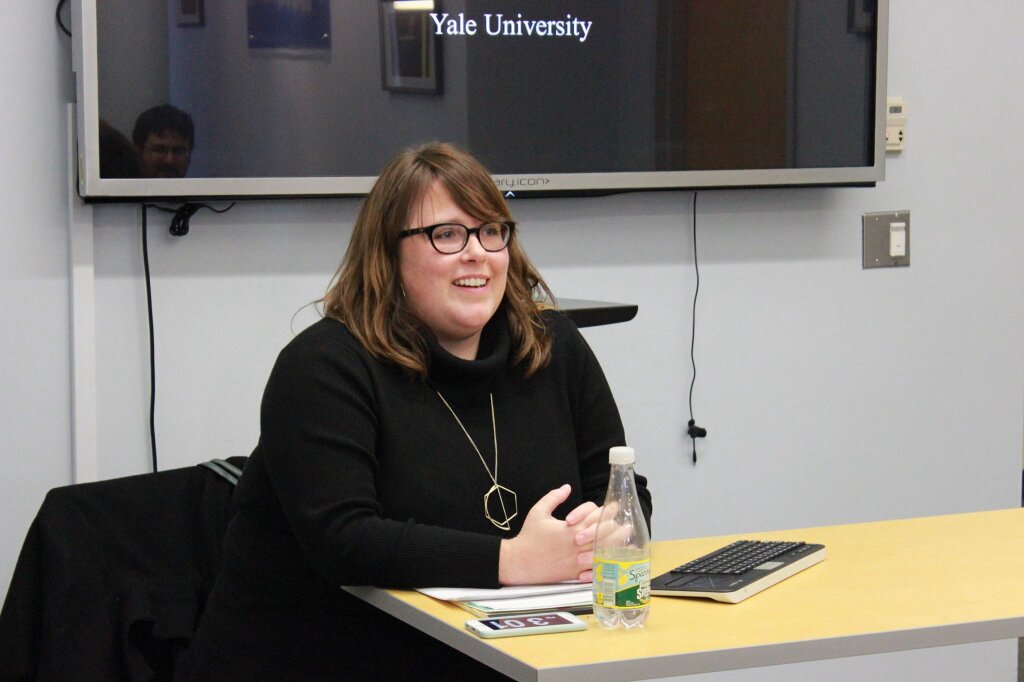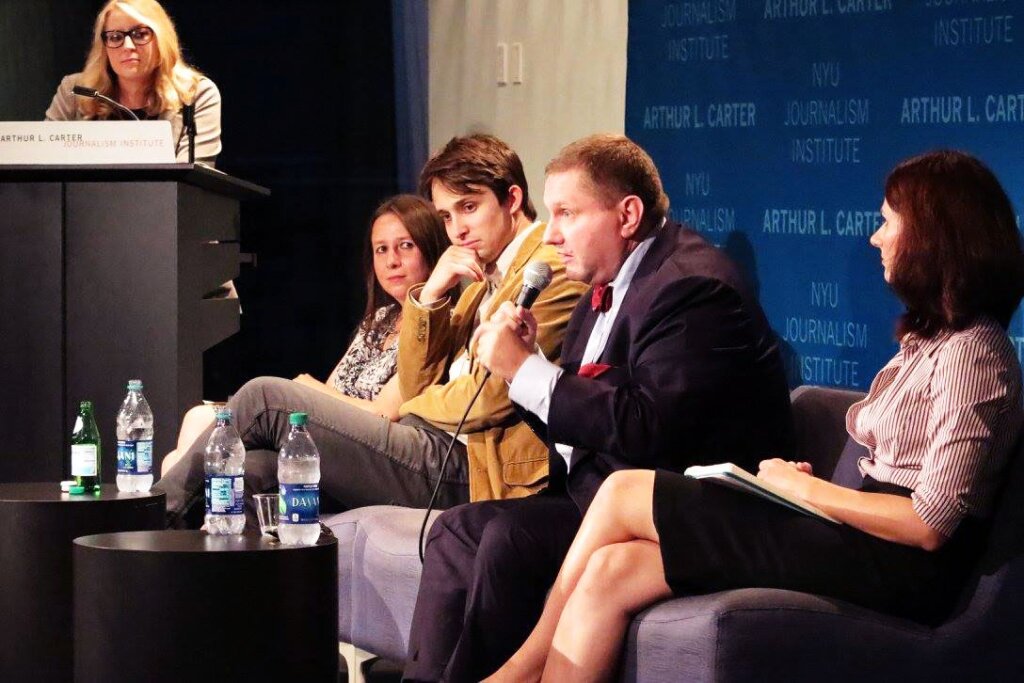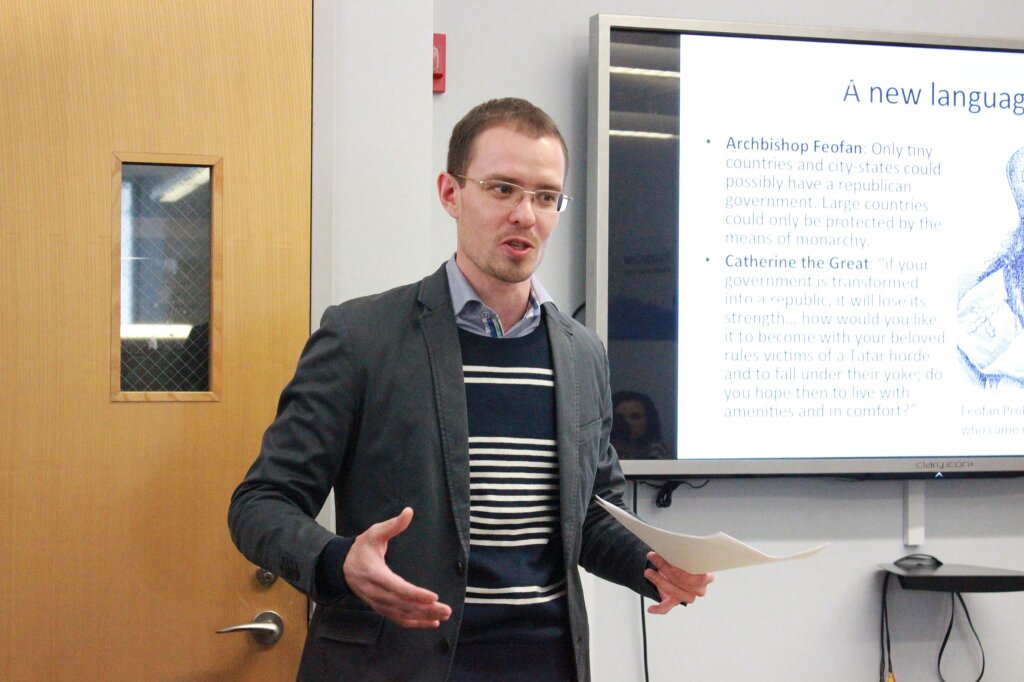On February 26, 2016, the NYU Jordan Center for the Advanced Study of Russia welcomed Molly Brunson from Yale University for a lecture on “Gogol Country: Rural Russia in Perspective.” After being introduced by Anne Lounsbery, Russian and Slavic Studies Department Chair at NYU, Brunson spoke about her work on a new project, titled “Russian Points of View: The Theory and Practice of Perspective in Russia, 1820-1840.” In her talk the speaker opened up productive ways to look at Gogol’s work, resisting fixation on dichotomies in order to center attention on the writer’s use of perspectival devices.
Brunson opened her lecture by addressing the dualism inherent in Gogol’s work. She quoted Russian literary critic Andrei Bely, who once said: “Gogol advances the science of seeing.” Gogol experimentation with space led Bely to think of him as a precursor to modernism. According to Brunson, however, this is only one side of Gogol. “Gogol’s attention to perspective was also grounded in the rise of realism in the 19th century,” she explained. “What emerges then is something like two Gogols.” While this dichotomy is necessary to studying Gogol’s prose, Brunson said that her project seeks to refocus attention on the object of study, looking at how Gogol engages in visual perspective and how these perspectives relate to narrative points of view. “I will offer an alternative way to understanding his vision, one that addresses the problem of realism and modernism, realism and romanticism, but that does so from slightly outside this binary,” she said.
Brunson then provided historical context. “By ‘perspective,’ we most commonly mean some kind of modern conceptualization of the linear perspective as it was invented or rediscovered in Italy in the 15th century,” she said. A creation of the Enlightenment, perspective refers to the rational representation of space in two dimensions, a technique that was thought to make possible an accurate world view and thus true knowledge. “Such a narrative maps rather conveniently onto [Gogol’s] familiar stories about Russia’s relation to the West and about her supposed march toward modernity that began in the 18th century,” Brunson said. “The very founding of Petersburg is a perspectival event – an attempt to create a modern Western and rational space out of the Russian hinterlands,” she added. Brunson also spoke about perspectives that exist outside of this framework, whose strains are seen in Gogol’s prose. “If Italian perspectives are produced while sitting at an easel, Japanese perspectives are produced while moving through, around, in, over, under various spaces,” Brunson said.
Brunson noted the dearth of Russian texts about perspective as a technique in the visual arts. The first such text authored in Russia was a treatise written by the painter Alexei Venetsianov in the 1830s. Venetsianov saw perspective both as a tool that would democratize the art profession and as a system that could be applied not only to historical and religious paintings but also to the generic scenes of everyday life that signaled the beginnings of 19th-century realism. “This is the perspectival context in which Gogol writes Dead Souls,” Brunson said, going on to share a series of passages from the novel that illustrate the way Gogol’s work uses perspective as both a liberating and restrictive device that centers the viewer’s eye at a pre-established vanishing point.
Brunson noted how Gogol constructs space using visual-spatial indicators. As she read passages from the novel, she encouraged the audience to imagine a perspectival cube in which space is plotted and produced largely through the relation of animals and objects that fulfill little function other than to create space alone. The speaker began with Chichikov’s carriage, which she sees as the central organizing device of Dead Souls. “It is tempting [...] to imagine this carriage as a kind of camera obscura, windows through which the passenger can view the world outside,” Brunson said, “[b]ut more so than the carriage, it is Chichikov who structures and focalizes our vision in the novel. He passes his gaze, becoming an aperture of the camera obscura.” At one point at the end of the first book, it seems that Gogol embraces both models – the reader is exposed to views inside and outside of the carriage. “We are jerking and jostling down the road in such a way that the view itself jerks and jostles,” Brunson said.
Dead Souls raises questions about Gogol’s adoption of various perspectival devices and how the use of these devices might inform our attempts to classify his work. It could be that Gogol’s attraction to such varied spatial models is a critique of Western rationalism, Brunson hypothesized. In one passage, for example, Gogol describes a sow eating a chicken eating a watermelon. “Perspectival space flattens differences and levels the playing field [and] at its center lies not truth, but unknowability,” Brunson said. But in another sense, the two worlds that Gogol describes offer an alternative position that can accommodate both perspectives, without devolving into competition or compromise. “This is a moment that prompts Gogol to tap the brakes, to reveal the riffs in such logical systems and to propose an alternative path for Russia in the 19th century,” Brunson explained.
In the Q&A session that followed, Brunson was able to broaden her discussion of perspectival devices in Dead Souls to talk about Gogol’s relation to his contemporaries and where he fits into world literary history. “I think that the perspective structure offers us another way of engaging these questions, perhaps a slightly more nuanced one.” She added that the problem with the East-West dichotomy is that it is itself a fabrication of the Enlightenment. Joining the discussion, Lounsbery pointed to Gogol’s singular position, which sets him apart from his contemporaries. Thanks to his eccentricity, she noted, “Gogol could have been merely objectified [...] but he resists that. He's a subject, not an object in the tradition.”



